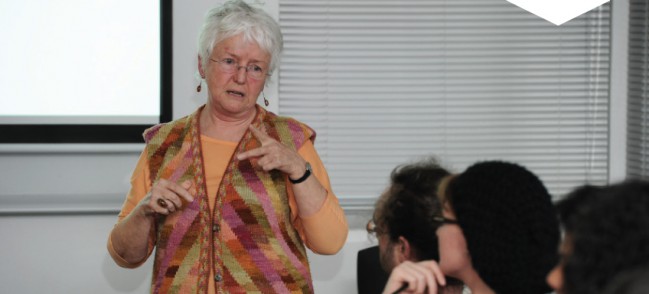It’s something that many South Africans might be familiar with, but Emeritus Professor Kay McCormick has shed new light on the finer points of language-mixing in oral and written communication.
Professor McCormick was the keynote speaker at the second instalment of the Spring Seminar Series held in 2013, which was hosted by The Institute for Humanities in Africa (HUMA) and celebrated 30 years since linguistics (now part of AXL, the School of African and Gender Studies, Anthropology and Linguistics) was established.
Language mixing is essentially the use of two or more languages in a single communiqué, from a single sentence to an extended stanza. “Is it conscious? Sometimes, yes. Sometimes it is absolutely not conscious,” Professor McCormick said. “Does it occur only in spoken languages? No.”
Professor McCormick played recordings of conversations she held with pre-school children in Chapel Street, District Six, in the 1980s (in the part that was not destroyed by forced removals), pointing out how the youngsters wove English and Afrikaans together seamlessly. Such language switching that occurs naturally, in spoken and written communication, shows that both the language and the speakers are flexible and fluid, and that the speakers are able to mentally reconcile both, said Professor McCormick.
Language as a marker of social identity was also key to informing when and who spoke, and in which way. From the switch between pre-meeting chatter and speaking to a peer, to addressing a figure of perceived authority, she explained that the more formal the setting, the less likely people were to speak in a mixed vernacular. “Power and status are also really important,” she said, adding that South Africa’s national anthem is a prime example of language switching in the new South Africa.



Comments are closed.